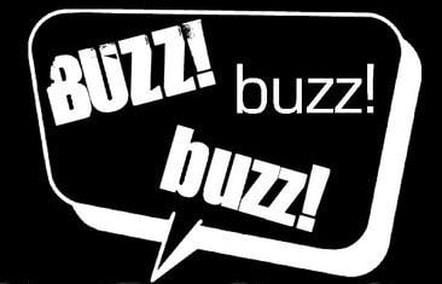Exclusive Access Granted To Our Blog!
|
Offering the lowest price is not a good marketing strategy and there are several reasons why. First of all, it reduces your profits and in order to help yourself and others, you do need profit. If you have to continually offer lower prices than anyone else in your industry, the increased sales you'll get could still have you earning less revenue. Secondly, what if someone prices even lower than you? Larger companies have a huge advantage when it comes to low pricing. They can afford to take a small loss if it means long-term gains. You may not have that same option. Instead, you should charge well for your products. There are several ways you can set your prices higher and still make sales. Perceived Value Price-setting isn't based on actual cost, but on perceived value. Perceived value is what your customers expect to pay for products such as yours. If you can grasp that perceived value is totally different from cost, this makes pricing higher much easier. For example, in the 1990s, a CD sold for $14 new. Never mind that it's a plastic disc with data imprinted on it whose actual material and production costs were a couple of dollars. People expected to pay $14, so record companies could charge it. So, how do you use perceived value to your advantage? You do it by understanding what your market perceives as valuable. In other words, what qualities of your product would lead your customers to pay higher prices? Emphasize Uniqueness Figure out what's unique about your product. Does this help or provide value to your customers in a way other products do not? Your product doesn’t have to be the best at what it does, but rather the only product that uniquely meets its buyers' needs. Customize and Personalize One area where it's hard for big companies to compete is customization. People are generally willing to pay more for a product that's designed especially for them to meet their individual needs. If you can find a way to customize your products or emphasize this customization as a key benefit, you can set prices higher. Aim Higher Maybe you're targeting the wrong market. There is always a segment of the population that's willing to pay a great deal for a high quality product. If you can sell to this segment, you'll have no problem setting your prices high. However, in order to do this, you have to convince this market that your product is high-quality. Identify this higher-paying market and do some research to see why they buy from the companies they buy from. Setting prices low isn't the only pricing tactic available for small business and, in fact, it might be the worst. Instead, look at your business and its products, and find ways you can set prices higher to make it more profitable for you and your market. Pat Simes is a Business Strategist, blogger and Founder of Innovative Business Solutions and Innovate Academy. She currently resides in the Midwest and is committed to inspiring and empowering entrepreneurs to transform their vision to reality.
0 Comments
Marketing isn't simple. To do it right, it requires a great deal of planning. Small businesses without massive marketing budgets have to handle this aspect of their business themselves and for many this is no easy task. This is why businesses create a marketing plan. A marketing plan is a detailed document that includes the data you need to make marketing decisions and set a course of action that you can implement immediately. Drafting a marketing plan takes a great deal of time and work, but here are a few questions to get you started. Who Is Your Target Market? If you're already selling, take a look at your existing customers. Who are they? What do they like about your company's products? Try to recall any positive feedback you've gotten from them. Naturally, if your brand resonates with these individuals, it will resonate with others like them. If you don't already have customers, defining your target market may take a bit more work. Look at companies that offer similar products to yours. Who is buying from them? Who could benefit from your products? Try doing some market research to glean some idea of who your target market is. What Makes Your Products Unique? There are bound to be other companies out there selling goods similar to yours. So, what makes yours different? Why would someone buy from you and not another company? Remember here that 'products' actually means your offering, which includes services as well. The term refers to whatever people buy from you. If the unique qualities of your products don't come to mind immediately, some work needs to be done. Do some soul searching and look for the strengths of your products. If, in the end, you find that your product unfortunately resembles basically everything else on the market, how can you change it to make it unique? What Do You Want Your Marketing to Achieve? Every business takes for granted that it needs to market, but why? The 'why' is critical. You need to identify exactly what you hope to achieve through your marketing because this will guide all of your efforts and help you choose which tactics are most appropriate. Once you know who your target market is, what's unique about your product or service, and what you want to get out of your marketing efforts, you're ready to get started with your marketing plan. Pat Simes is a Business Strategist, blogger and Founder of Innovative Business Solutions and Innovate Academy. She currently resides in the Midwest and is committed to inspiring and empowering entrepreneurs to transform their vision to reality. Today, people are swamped with marketing messages. Everywhere we go both online and off, we get a massive dose of aggressive marketing. How can you cut above all of this noise and get your message to your market? This has led marketers to think outside the box and develop bold, creative new ideas for getting their marketing to the masses. The buzzword 'guerrilla marketing' is used to refer to these tactics. What Is Guerrilla Marketing? Guerilla marketing means marketing that is unconventional. Jay Conrad Levinson, who coined the term, calls it, “The achievement of conventional goals (e.g. profit) using unconventional methods such as investing energy and ideas instead of money.” It is intended to achieve maximum results for as little cost as possible. This makes it a great alternative for small businesses that are operating on a shoestring budget. A small business can't pump the advertising dollars a big company has into a massive campaign, so it has to leverage its creativity. The Risks of Guerrilla Marketing This unconventional approach isn't appropriate for all niches or industries. Part of the point of guerrilla marketing is to ruffle feathers, surprise people, and shake things up. In industries where security is a major issue, such as finance or insurance, it's not such a good idea. Instead of subverting the paradigm, you could show your company to be untrustworthy. However, for most businesses in retail, it's a great way to pique curiosity and get people interested. Guerrilla Tactics There is no standard for guerrilla marketing since it thrives on creativity. But common methods include creating urban art, turning unused space into art, or making ads that are optical illusions. Some companies set up funny scenarios that are straight out of a hidden camera television show. For example, they might have live people in their window displays. Other ideas include leaving interesting post-it notes or branded merchandise in public places such as cafes and bars. Humorous or eye-catching stickers can be printed cheaply and put in unexpected places. You can create flyers to hang around town that are in an interesting shape or particularly eye catching. Business cards can be made in wildly creative styles. Free stuff is often part of guerrilla marketing. The offer of something valuable for free is always an attention grabber. Talk to other businesses and put together a package of free stuff to give away to potential customers. Finally, a common guerrilla marketing tactic is to throw a party. There's no promotion involved here. Just invite your customers to come and have a good time, thus building a stronger connection with your business. The idea is to get media attention, so let people know. An effective strategy to boost your guerrilla marketing is to issue a press release each time you employ one of these tactics. If you're going to try guerrilla marketing, remember that the goal is to surprise and engage, not to insult, offend, annoy, or upset people. Pat Simes is a Business Strategist, blogger and Founder of Innovative Business Solutions and Innovate Academy. She currently resides in the Midwest and is committed to inspiring and empowering entrepreneurs to transform their vision to reality. Marketing plans come in all shapes and sizes. The right marketing plan for your business depends on many different factors. But one thing all businesses have in common is that they can benefit a great deal from blogging. Blogging is a tactic used in content marketing. When you write a blog, you publish a steady stream of fresh content. This content draws traffic to your site and earns new readers, while also building a relationship with the readers you have. Blogging Is Simple but Effective Many small businesses don't want to blog because it's 'writing' and you're not a 'writer.' But blogging is extremely simple. This is why it makes a perfect element in an online marketing plan. Blog posts can be as short as 300 words or even less. They can include videos and images. Each post can cover one simple topic and the writing doesn't have to be magazine-grade. Write in a conversational tone like you're talking to a friend and proofread so that there aren't any grammar or spelling mistakes. The way to blog headache-free is to set aside a little time each week to write and post. Carve out an hour or so to write something and post it. If you have a team member who can write well, delegate the task to them. How to Get Ideas The other trouble many people have when they start blogging is where to get ideas. Here are some simple places to get ideas for your blog posts:
Keep an idea file. Spend some time brainstorming topics at first and then add to it whenever you get an idea. Whenever you need an idea, refer to this file and start writing. Working a Blog into Your Marketing Plan Decide what topics your blog will cover and at what frequency you'll write and post. If you add a blog to your website, you'll boost your site's SEO and give visitors more to do there. You can also use your blog's analytics and its reader comments to learn more about your target market and its tastes. Pat Simes is a Business Strategist, blogger and Founder of Innovative Business Solutions and Innovate Academy. She currently resides in the Midwest and is committed to inspiring and empowering entrepreneurs to transform their vision to reality. Before you get into marketing your business, you need to identify its business goals. Although we take for granted that a business's goal is to increase revenue, that's not the end of the story. There are many other types of goals companies strive to achieve. Product Creation Some businesses are driven by the desire to offer excellent products that make life easier for all of us. Your business goal may be to create the most innovative products on the market. This is a wonderful goal because products are at the heart of any business's success. Customer Service Your business's goal may be to serve your customers and help them solve their problems. It may also be to lend help to the community or to strengthen the community of your customers. This is also an excellent choice because good customer service leads to more sales. Customer Retention Your goal may be to not only gain new customers and increase revenue, but to keep the customers you have. Businesses do this by creating a community for their customers and by remaining open to their feedback in order to improve their products or services. Growth and Expansion Maybe your business's goal is to grow and expand, eventually moving into new markets and new enterprises. If this is the case, conducting market research to find new areas would be a major part of your overall strategy. Efficiency A major goal for your company may be to tighten up your processes. This might include challenging your salespeople to reach an ever higher sales ratio or streamlining your shipping in order to reach your customers more quickly. Changing the World Some companies have as part of their vision to enable social change. Your goal might be to make the world a better place through the use of your products and services. This is a goal for many companies that produce environmentally-friendly products or work to streamline their operations so that they're more ecological. Increasing revenue and profit isn't the only goal of most businesses. Look at your business currently and ask yourself what other goals you have. This will help you as you plan your marketing. Pat Simes is a Business Strategist, blogger and Founder of Innovative Business Solutions and Innovate Academy. She currently resides in the Midwest and is committed to inspiring and empowering entrepreneurs to transform their vision to reality. |
AuthorPat Simes Archives
July 2024
Categories
All
|






 RSS Feed
RSS Feed